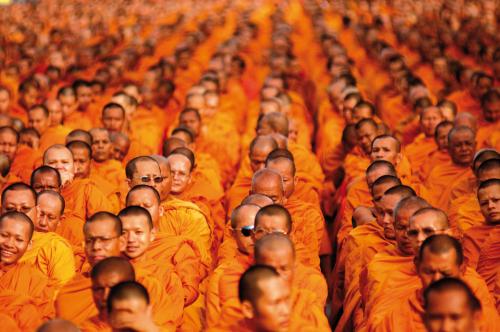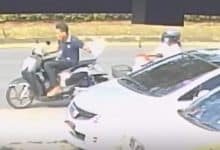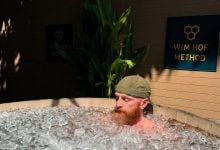Phuket to celebrate Lord Buddha’s wisdom

PHUKET: Wat Chalong won’t be the only crowded temple in Phuket this coming Monday as Buddhists across the island celebrate Asaha Bucha to commemorate the Lord Buddha’s first teaching of Dhamma to his disciples. What started as a sermon for just 5 believers turned in to a world wide phenomenon with an estimated 400 million followers.
The words “Asaha Bucha“, also spelt Asarnha and Asalaha Bucha, derive from ancient Pali language and literally mean “worshiping fourth month”. The fourth month of the ancient Indian lunar calendar is equivalent to the eight month of the Thai lunar calendar. It’s on the full moon of that month that Asaha Bucha takes place.
It is for the same reason that in Thai, Asaha Bucha is also referred to as wun pen deuan bpad, the full-moon-day of the eighth month. It is one of three lunar-based Buddhist holidays in Thailand.
The other two are Makha Bucha Day, typically on the full moon in February, though sometimes in March, which commemorates the Lord Buddha’s sermon to 1,250 followers; and Visakha Bucha Day, typically on the full moon in May, though sometimes late April, which celebrates Lord Buddha’s birth, enlightenment and death all in one.
The intricacies of custom and tradition all too often cloud underlying meanings and purposes. Contrary to popular belief, to understand the essence of Buddhism and benefit from its philosophy, worshipers do not have to be versed in ancient mantras and spells, nor do they need to seek the protection of a magical tattoo or amulet. In fact, many of the practices we see today are contradictory if not irrelevant to what Lord Buddha actually taught.
The real point of Asaha Bucha day is to honor Lord Buddha’s first and fundamental sermon, which explains that the Dharma Wheel – an analogy for our life cycle – comprises the “spokes” of birth, illness, death and rebirth. The wheel turns relentlessly; life is a constant cycle of suffering caused by our desires, dependencies and attachments.
In order to break free from the cycle of pain and suffering that is life, not to be reborn again into the same cycle and thus obtain the ultimate truth of enlightenment, detachment and renunciation of the unessential and harmful things in life must be practiced. At the same time, it is important to avoid extremes and instead seek a middle path, willfully and consciously living by the basic five precepts: to abstain from killing, stealing, lying, drinking and sexual misconduct.
ASAHA BUCHA DAY
Celebrations and ceremonies in temples are generally the same for all three major Buddhist festivals. After the offerings, blessings and sermons during the day, there is a climactic moonlight candle procession during which participants, carrying a lit candle, three joss sticks and a lotus flower encircle the temple’s main Buddha hall three times.
The number three in Buddhism refers to the “triple gem” and symbolically represents the Lord Buddha, his teachings (Dharma) and the clergy (Sangha). This is the reason for circling a temple or crematory three times and also prostrating three times in veneration of the Lord Buddha or a senior monk. That said, Lord Buddha is not a god to be worshiped, but rather a teacher to be honored.
KHAO PANSA
The day after Asaha Bucha this Tuesday, July 23 is Khao Pansa, literally the “rains retreat”. This is the customary time for laymen to ordain as monks.
For this three-month period, monks traditionally retreat to temples because the rains make it difficult for them to meditate in the forest or ask for alms in villages on a regular basis. To ensure the monks are able to sustain themselves, laypeople make larger-than-usual offerings during Khao Pansa.
THE ULTIMATE TRUTH
Aside from food, large candles have been the customary form of offering, a practice dating to times before the invention of electricity. Today, large candles are still offered but this is largely a tradition now as most temples have a continuous supply of electricity.
During Khao Pansa, monks stay in temples, disciplining themselves by following hundreds of precepts which dictate that they abstain from everything – from growing eyebrows to even singing. This is in contrast to the five basic precepts that laypeople attempt to follow as outlined in the Lord Buddha’s principle sermon.
Khao Pansa also sees an increase in social awareness through media campaigns on Thai TV, newspapers and radio; the most common of these is echoed in the nationwide alcohol abstinence slogan: Khao Pansa Ngote Lao.
Which Wat to wander to?
Want to join the celebrations? Try one of the four prominent temples in Phuket.
- Wat Chalong is the most famous temple in Phuket. It is dedicated to two monks who helped locals fight against a Chinese rebellion (map).
- Wat Thepnimit is located in Wichit district and is one of the oldest temples in Phuket.
- Wat Mongkol Nimit near Phuket Town is very popular with local Buddhist because of its convenient location.
- Wat Suawan Kiriwong in Patong is your temple of choice if you’re staying in the popular seaside party town (map).
Keep checking our Lifestyle pages for the latest happenings across Phuket. Alternatively, join our Facebook fan page or follow us on Twitter.
Latest Thailand News
Follow The Thaiger on Google News:


























